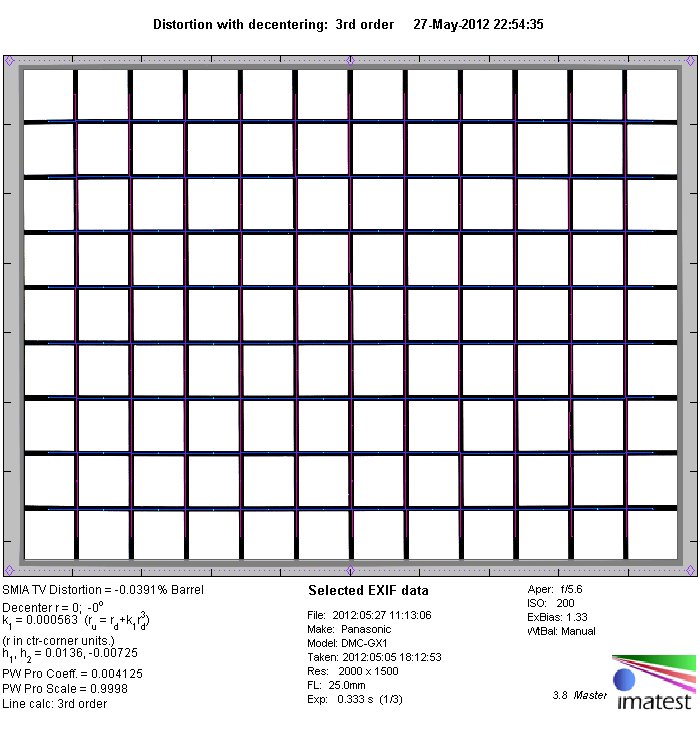|
Page 2 of 3

Distortion
The Leica lens produces only a negligible degree of barrel distortion (~0.04%) which is not noticeable in field conditions - that's on MFT cameras with auto-correction. However, the uncorrected RAW data shows a strong (~2.73%) barrel distortion.
If you move your mouse cursor over the image you can switch to the corresponding non-corrected results.

Vignetting
Typically for a large aperture lens, the lens shows heavy vignetting of around ~1,3EV (f-stops) at wide open aperture but stopping down to f/2.8 onwards reduces the light fall-off to irrelevant levels.
The following graphs compare the vignetting characteristic of auto- and non-corrected files from f/1.4 aperture to f/11.
And one more figure to illustrate the above mentioned heavy vignetting at f/1.4 and the moderate vignetting at f/2.0.
MTF (resolution)
Please note that we upgraded our test system! Micro Four Thirds lens tests have switched from the Panasonic GF1 (12MP) to the Panasonic GX1 (16MP). The new resolution results in higher MTF figures and the values are not comparable among each other.
The lens delivers an excellent resolution in the image center straight from the maximum aperture. The borders are consistently on a very good level whereas the extreme corners are only about average, but stopping down to f/2.8 improves them substantially. Finally, the peak performance is reached between f/2.8 and f/4 with very sharp results across the image frame. Nevertheless, stopping down beyond f/8 reduces the quality considerably due to diffraction effects.
Please note that the MTF results are not directly comparable across the different systems!
Below is a simplified summary of the formal findings. The chart shows line widths per picture height (LW/PH) which can be taken as a measure for sharpness.
If you want to know more about the MTF50 figures you may check out the corresponding Imatest Explanations
Chromatic Aberrations (CAs)
A good news is the low amount of lateral CAs (color shadows at harsh contrast transitions) - at least when shooting JPEGs or using mainstream RAW converters. These color shadows are negligible throughout the whole focal length with an average CA width of around ~0.25px at the image borders. However, the non-corrected RAWs show a different situation with an average CA width of around ~0.53px which is still very low though.
The following figure shows the corresponding performance of auto-corrected JPEGs obtained straight from the camera compared to non-corrected raw files.
Bokeh
The quality of the bokeh (out-of-focus blur) is naturally a major aspect for such a lens and the Panasonic doesn't disappoint us here. Out-of-focus highlights are very evenly rendered and the focus transition zone is pretty smooth. Bokeh fringing (colored halos in the focus transition zones) are visible at max. aperture but not overly disturbing. However, the highlight discs are no longer circular from f/2.0 onward which is surprising considering the manufacturer statement that the lens has rounded aperture blades.
|